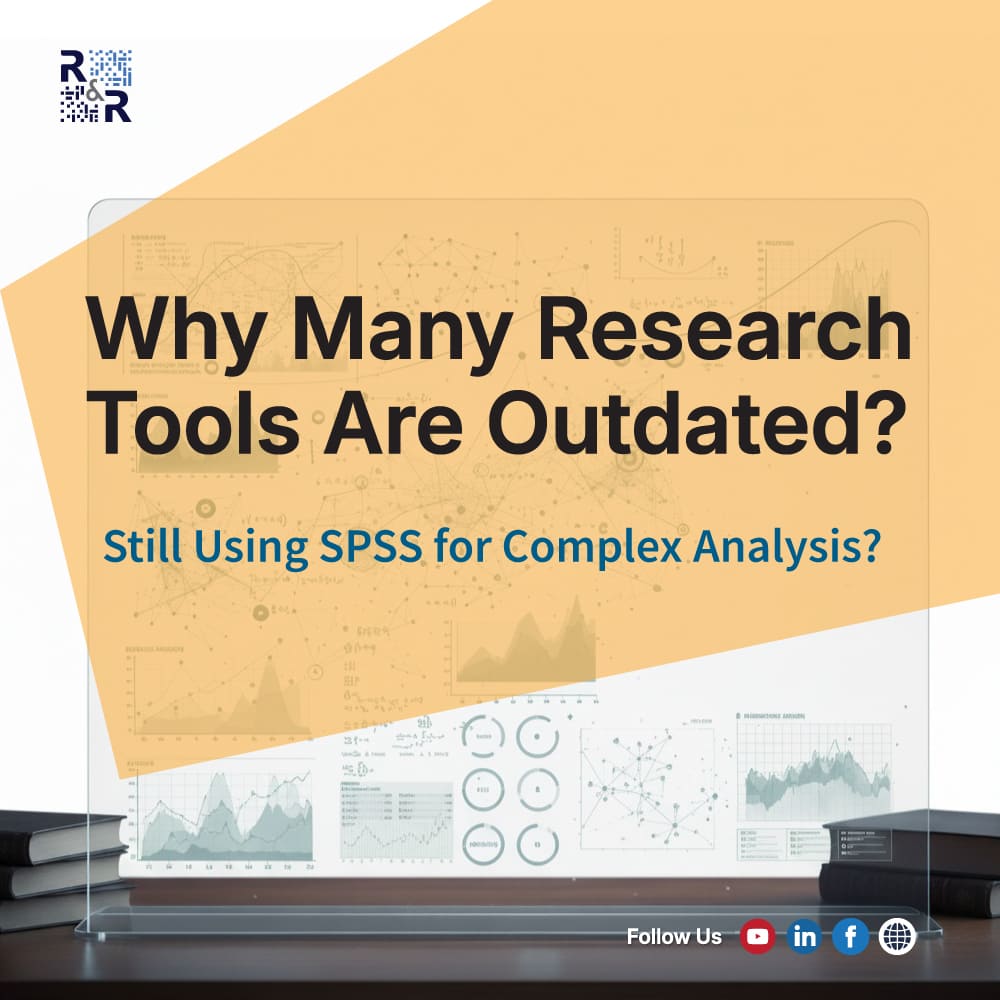Academic publishing has changed rapidly. Research today requires transparency, advanced analytics, and integration with modern data science tools. Yet many researchers still rely on SPSS, a tool designed decades ago for basic statistical work.
At Research & Report Consulting (RRC), we often see manuscripts where the research questions are innovative, but the methods are outdated. This mismatch often leads to rejection from journals and poor impressions with funders.
So why is SPSS no longer enough for modern research? Let’s break it down.
SPSS Strengths—and Serious Weaknesses
Limited to Basic Statistics
SPSS works well for descriptive statistics, t-tests, ANOVA, and simple regressions. But when researchers attempt:
- Econometrics
- Structural Equation Modeling (SEM)
- Multilevel or hierarchical models
- Time-series forecasting
…it quickly becomes inadequate. Competing tools like R, Stata, and Mplus handle these tasks with greater accuracy and flexibility.
Poor Reproducibility
Reproducibility is a global concern in research (Baker, 2016, Nature). SPSS workflows often rely on point-and-click menus, making it difficult for others to replicate results.
- R and Python offer script-based pipelines, enabling reproducible workflows and version control.
- SPSS syntax is rigid and lacks transparency.
No Integration with Modern Data Science
Today’s research increasingly uses machine learning, big data, and advanced visualization. SPSS is not built for this.
- Even Stata now supports panel data econometrics, Bayesian analysis, and automation.
- Python integrates with TensorFlow, Scikit-learn, and PyTorch.
- R offers packages like
caret,tidyverse, andggplot2for data analysis and visualization.
Reviewer Expectations Have Changed
Top-tier journals now expect methods like:
- Panel data models
- Difference-in-Differences (DiD)
- Bayesian approaches
- Network analysis
Using only SPSS signals methodological stagnation. Reviewers often view SPSS-only studies as less rigorous.
High Cost, Low Flexibility
SPSS requires expensive licenses. In contrast:
- R is free and open-source.
- Python is free, widely supported, and industry-standard.
- Stata, NVivo, MAXQDA, AMOS, and Mplus offer specialized tools at competitive costs.
Why pay high fees for fewer capabilities?
How Research & Report Consulting Helps Researchers Upgrade
At RRC, we guide researchers to:
– Transition from SPSS to R, Python, Stata, NVivo, MAXQDA, and Mplus.
– Apply cutting-edge methods that meet reviewer and funder expectations.
– Ensure reproducibility and transparency in statistical analysis.
– Align research design with the standards of top-tier journals.
With the right tools, your research credibility improves dramatically.
Conclusion: Outdated Tools = Outdated Research
Outdated tools limit research credibility. Using SPSS for everything is like writing with a typewriter in the laptop era.
Question for Readers:
Are you still using SPSS, or have you transitioned to modern tools like R and Python? Share your experiences below!
References
- Baker, M. (2016). 1,500 scientists lift the lid on reproducibility. Nature.
- Higgins, J.P.T., & Green, S. (2011). Cochrane Handbook for Systematic Reviews.
- Nature Research Methods Survey (2022). Trends in Statistical Software Use.
- Wickham, H. (2019). Advanced R. CRC Press.

